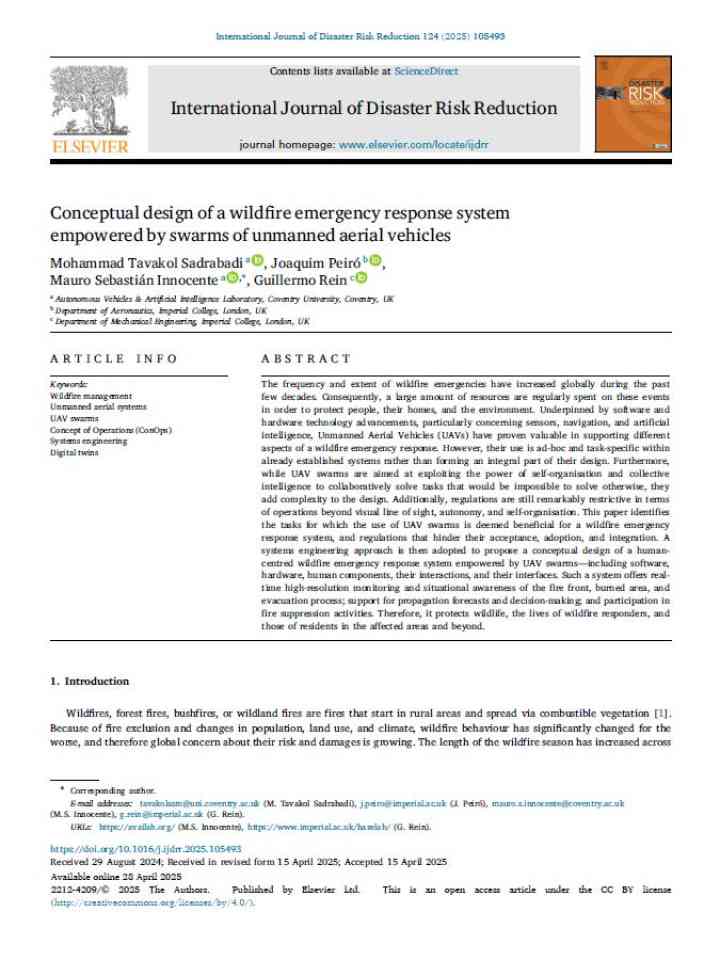Conceptual design of a wildfire emergency response system empowered by swarms of unmanned aerial vehicles
This paper identifies the tasks for which the use of Unmanned Aerial Vehicles (UAVs) swarms is deemed beneficial for a wildfire emergency response system, and regulations that hinder their acceptance, adoption, and integration. Underpinned by software and hardware technology advancements, particularly concerning sensors, navigation, and artificial intelligence, UAVs have proven valuable in supporting different aspects of a wildfire emergency response.
A systems engineering approach is adopted in this paper to propose a conceptual design of a human-centred wildfire emergency response system empowered by UAV swarms—including software, hardware, human components, their interactions, and their interfaces. Such a system offers real-time high-resolution monitoring and situational awareness of the fire front, burned area, and evacuation process; support for propagation forecasts and decision-making; and participation in fire suppression activities. Therefore, it protects wildlife, the lives of wildfire responders, and those of residents in the affected areas and beyond.
Explore further
